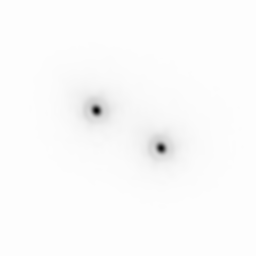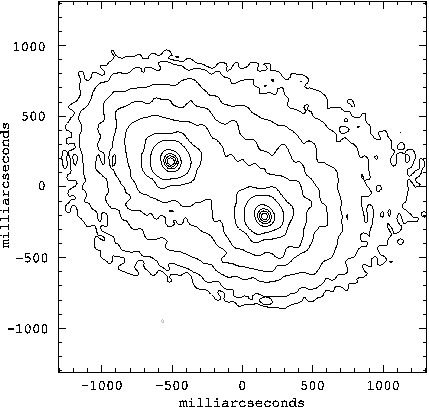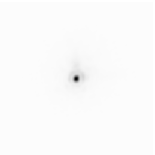
This article is based on a recently accepted paper to Astronomy
and Astrophysics entitled `Diffraction-limited 800nm imaging with the 2.56m
Nordic Optical Telescope' by J.E. Baldwin, et al [1] (postscript copy).
Described here is an exciting new technique to acquiring diffraction-limited images in the visible waveband from medium size telescopes. It exploits the property that for nominal seeing on a good site (approx 0.5 arcseconds) there is a probability that occasionally for short periods the atmosphere will produce a sharp image. If these sharp images are identified, selected and co-added by shift and add, then an image close to the diffraction limit of the telescope can be obtained.
The principle behind the method is to take many short exposure images and to select the good ones for construction of the final picture. The occurrence of a "lucky exposure" will be when the phase variations due to the atmosphere are less than ~1 radian across the aperture of the telescope. Fried [2] calculated the probability P, of having a phase variation across a given aperture D of less than 1 radian for a seeing defined by the spatial scale r0:
P ~ 5.6exp(-0.1557(D/r0)2)
For the NOT given a seeing of 0.5 arcseconds at 800nm then D/r0 will
be 7, giving a probability of getting one exposure with a Strehl ratio
greater than 0.37 to be one in 350. For a telescope of 3.6m diameter the
probability at 800nm will fall to only one in 1000000, implying the technique
can only realistically be carried out on medium sized telescopes (<2.5m)
with a well adjusted primary mirror.
To demonstrate the technique a camera with a frame transfer 512x512
15um CCD run by a AstroCam 4100 controller and capable of frame rates greater
than 150Hz was mounted on the NOT with some simple reimaging optics to
produce an image scale of 41~milliarcseconds/pixel giving a FWHM of the
diffraction-limited image of 66~milliarcseconds at 800nm, with the HiRAC
i filter centred at 810nm with a bandwidth of 120nm defining the band.
Observations where made during the two technical nights 12-13 May 2000, typically at zenith angles < 20 degrees though angles up to 50 degrees where explored. The seeing during these two nights was around 0.5 arcseconds.
A brief description of the analysis of the data procedure is: Using only runs with known good images, the FWHM and total stellar flux was determined, then each frame was interpolated to give a factor of 4 times greater resolution. The Strehl ratio for each frame was derived and all ``good'' frames selected with a Strehl ratio greater than some chosen value, shifted so the peak pixels where superimposed and stacked to produce a single image.
To go to fainter objects successive short exposure frames were added
together without image motion correction to give longer exposure times.
It has been found that periods as long as 30ms could be used with only
a small reduction of the observed Strehl ratio.



[2] Fried, D. L. 1978, Optical Society of America Journal, 68, 1651
[3] Mackay, C. D., Bell, R., Burt, D., Moody, I. & Tubbs, R. N., 2001, SPIE Proceedings, 4306, (in press)